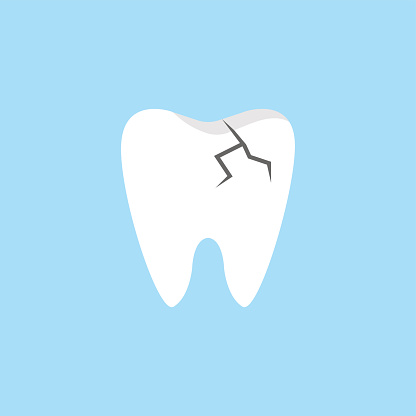Dealing with a Cracked Molar - What You Need to Know
Posted on 9/15/2025 by Brush & Floss Office |
 Have you ever experienced a sharp pain while chewing or a sudden sensitivity to hot or cold that lingers? These could be signs of a cracked molar, a common dental issue that can be quite bothersome. Have you ever experienced a sharp pain while chewing or a sudden sensitivity to hot or cold that lingers? These could be signs of a cracked molar, a common dental issue that can be quite bothersome.
Cracking molars often go unnoticed until they cause pain. This is because the crack might be small and hidden deep within the tooth structure. However, neglecting a cracked molar can lead to more severe problems, including infection and tooth loss.
In this article, we will explore the causes, symptoms, and treatment options for cracked molars. We will also discuss how good oral care and regular dental visits can help prevent this issue from occurring in the first place.
Understanding Cracked Molars
A cracked molar is a fracture in the tooth that can extend from the crown (the visible part of the tooth) down to the root. Cracks can be vertical, horizontal, or diagonal, and they can range in severity from minor hairline fractures to complete breaks.
Several factors can contribute to cracked molars, including:
| • |
Chewing hard foods: Biting down on hard objects like ice, nuts, or candy can put excessive stress on the molars, leading to cracks. |
| • |
Teeth grinding: Grinding your teeth at night (bruxism) can also cause cracks to develop over time. |
| • |
Large fillings: Large fillings can weaken the tooth structure and make it more susceptible to cracking. |
| • |
Trauma: Blows to the face or jaw can directly fracture a molar. |
Recognizing the Signs
Cracked molars can manifest in various ways. Some of the common symptoms include:
| • |
Pain: This is the most common symptom, often described as a sharp, throbbing pain that occurs when biting down or chewing. |
| • |
Sensitivity: The tooth may become sensitive to hot, cold, or sweet foods and beverages. |
| • |
Swelling: The gums around the cracked tooth may become inflamed and swollen. |
| • |
Visible crack: In some cases, the crack may be visible on the surface of the tooth. |
Treatment Options
The treatment for a cracked molar will depend on the severity of the crack and the overall health of the tooth. Here are some common treatment options:
| • |
Monitoring: If the crack is small and not causing any symptoms, your dentist may recommend monitoring it closely. This will involve regular checkups to ensure the crack doesn't worsen. |
| • |
Restoration: If the crack is larger or causing pain, your dentist may recommend a restoration procedure. This could involve placing a filling, crown, or onlay to seal the crack and protect the tooth. |
| • |
Root canal: If the crack extends into the pulp (the soft tissue inside the tooth) and causes infection, a root canal may be necessary. This procedure removes the infected pulp and seals the root canals. |
| • |
Extraction: In severe cases where the tooth is badly damaged or cannot be repaired, extraction may be the only option. |
Prevention: The Best Medicine
The best way to deal with cracked molars is to prevent them from happening in the first place. Here are some tips for maintaining good oral care and reducing your risk of developing a cracked molar:
| • |
Practice good oral hygiene: Brush your teeth twice daily with fluoride toothpaste, floss daily, and use mouthwash to remove food particles and plaque. |
| • |
Avoid chewing hard foods: Limit your intake of hard foods like ice, nuts, and candy. |
| • |
Wear a mouthguard: If you grind your teeth at night, wear a mouthguard to protect your teeth from damage. |
| • |
Visit your dentist regularly: Schedule regular dental checkups and cleanings to detect any cracks or other dental problems early on. |
Conclusion
A cracked molar can be a painful and inconvenient dental issue. However, with proper diagnosis and treatment, most cracked molars can be successfully restored and preserved. By following good oral care habits and visiting your dentist regularly, you can significantly reduce your risk of developing a cracked molar. Remember, early detection and treatment are key to maintaining a healthy smile. |
|